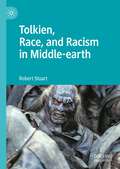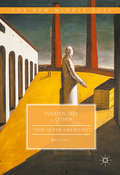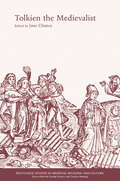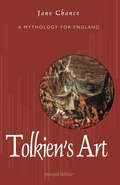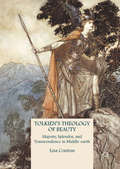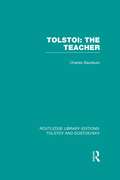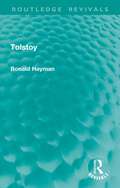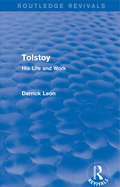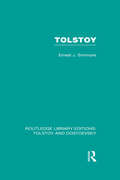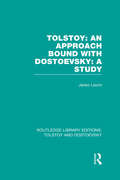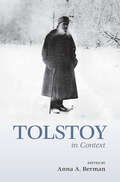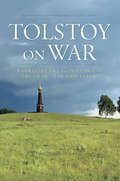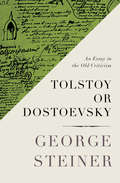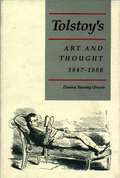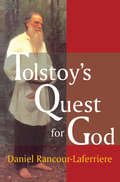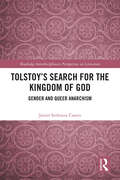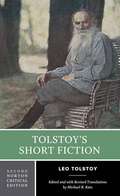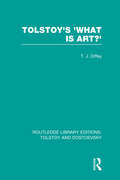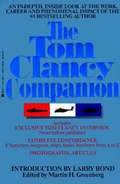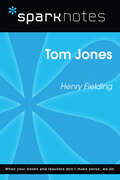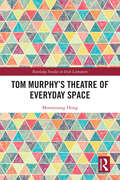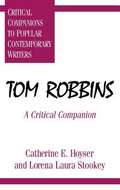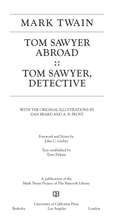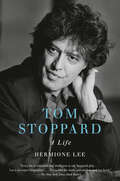- Table View
- List View
Tolkien, Race, and Racism in Middle-earth
by Robert StuartTolkien, Race, and Racism in Middle-earth is the first systematic examination of how Tolkien understood racial issues, how race manifests in his oeuvre, and how race in Middle-earth, his imaginary realm, has been understood, criticized, and appropriated by others. This book presents an analysis of Tolkien’s works for conceptions of race, both racist and anti-racist. It begins by demonstrating that Tolkien was a racialist, in that his mythology is established on the basis of different races with different characteristics, and then poses the key question “Was Tolkien racist?” Robert Stuart engages the discourse and research associated with the ways in which racism and anti-racism relate Tolkien to his fascist and imperialist contemporaries and to twenty-first-century neo-Nazis and White Supremacists—including White Supremacy, genocide, blood-and-soil philology, anti-Semitism, and aristocratic racism. Addressing a major gap in the field of Tolkien studies, Stuart focuses on race, racisms and the Tolkien legendarium.
Tolkien, Self and Other
by Jane ChanceThis book examines key points of J. R. R. Tolkien's life and writing career in relation to his views on humanism and feminism, particularly his sympathy for and toleration of those who are different, deemed unimportant, or marginalized--namely, the Other. Jane Chance argues such empathy derived from a variety of causes ranging from the loss of his parents during his early life to a consciousness of the injustice and violence in both World Wars. As a result of his obligation to research and publish in his field and propelled by his sense of abjection and diminution of self, Tolkien concealed aspects of the personal in relatively consistent ways in his medieval adaptations, lectures, essays, and translations, many only recently published. These scholarly writings blend with and relate to his fictional writings in various ways depending on the moment at which he began teaching, translating, or editing a specific medieval work and, simultaneously, composing a specific poem, fantasy, or fairy-story. What Tolkien read and studied from the time before and during his college days at Exeter and continued researching until he died opens a door into understanding how he uniquely interpreted and repurposed the medieval in constructing fantasy.
Tolkien the Medievalist (Routledge Studies in Medieval Religion and Culture #Vol. 3)
by Jane ChanceInterdisciplinary in approach, Tolkien the Medievalist provides a fresh perspective on J. R. R. Tolkien's Medievalism. In fifteen essays, eminent scholars and new voices explore how Professor Tolkien responded to a modern age of crisis - historical, academic and personal - by adapting his scholarship on medieval literature to his own personal voice. The four sections reveal the author influenced by his profession, religious faith and important issues of the time; by his relationships with other medievalists; by the medieval sources that he read and taught, and by his own medieval mythologizing.
Tolkien's Art: A Mythology for England
by Jane ChanceThis literary study examines the scholarly and mythological roots of the author’s beloved stories, including The Hobbit and The Lord of the Rings.J.R.R. Tolkien captured the imaginations of generations with his expansive fantasy worlds and tales of high adventure. But Tolkien was also an accomplished scholar whose deep knowledge of mythology and language provided a wellspring of inspiration for his fiction. In this enlightening study, Tolkien specialist Jane Chance uncovers the many sources the author used in composing his works.Inspired by works like Beowulf and Gawain and the Green Knight, Tolkien relied on both pagan epic and Christian legend to create a distinctly English mythology. Chance traces this project through his major works as well as his minor stories and critical essays. This revised and expanded edition also examines the paradigm of the critic as monster featured in many of Tolkien’s writings.
Tolkien's Theology of Beauty
by Lisa CoutrasIn this book, Lisa Coutras explores the structure and complexity of J. R. R. Tolkien's narrative theology, synthesizing his Christian worldview with his creative imagination. She illustrates how, within the framework of a theological aesthetics, transcendental beauty is the unifying principle that integrates all aspects of Tolkien's writing, from pagan despair to Christian joy. J. R. R. Tolkien's Christianity is often held in an unsteady tension with the pagan despair of his mythic world. Some critics portray these as incompatible, while Christian analysis tends to oversimplify the presence of religious symbolism. This polarity of opinion testifies to the need for a unifying interpretive lens. The fact that Tolkien saw his own writing as "religious" and "Catholic," yet was preoccupied with pagan mythology, nature, language, and evil, suggests that these areas were wholly integrated with his Christian worldview. Tolkien's Theology of Beauty examines six structural elements, demonstrating that the author's Christianity is deeply embedded in the narrative framework of his creative imagination.
Tolstoi: The Teacher (Routledge Library Editions: Tolstoy and Dostoevsky)
by Charles-BaudouinThe author states here that Tolstoy was a great educator and his views on education were ingenious and profound. Despite being a great artist, Tolstoy also had pedagogic method and drew abundantly on the stores of science. The book looks at articles which Tolstoy wrote on education and childhood, comparing him frequently to Rousseau, and also outlines the influences of his travels which informed his knowledge of contemporary schooling. The conclusion considers the development of Tolstoy’s thought on teaching alongside the state of education at the time the book was first published, in 1923. This will be of interest for the educational historian as well as those interested in Tolstoy himself.
Tolstoy (Routledge Revivals)
by Ronald HaymanOriginally published in 1970, this account of Tolstoy’s achievement as a novelist concentrates on the best known of his works, in particular the two masterpieces Anna Karenina and War and Peace. Extracts are, however, taken from all the major novels and are arranged chronologically to demonstrate the development of his technique. The main part of the book is concerned with narrative method and analyses Tolstoy’s treatment of character, landscape and dialogue together with his use of satire and irony. The range of subject matter throughout the novels is then discussed. In this way, Tolstoy’s genius is seen to lie in his unique gift for penetrating deeply into the individual lives of his characters and at the same time embracing their actions within a complete framework of social and political life.
Tolstoy: His Life and Work (Routledge Revivals)
by Derrick LeonThis book, first published in 1944, provides a comprehensive overview of the work and life of the writer and philosopher Lev Nikolayevich Tolstoy. Widely considered one of the greatest novelists of all time, this title examines some of Tolstoy’s most seminal works, including War and Peace and Anna Karenina. This book will be of interest to students of literature and philosophy.
Tolstoy (Routledge Library Editions: Tolstoy and Dostoevsky)
by Ernest Joseph SimmonsTolstoy’s fame as one of the world’s greatest novelists has never been in doubt, but the importance of his views on the social, moral and religious issues of his time is not so widely recognised. This study, first published in 1973, presents an introduction to the historical and cultural background of Tolstoy’s lifetime, then going on to consider the major events of his developing personality as a writer and reformer. As well as considering the famous novels and literary criticism, Simmons treats his educational theories and practice, famine relief work, spiritual crises and religious, social and moral beliefs, as reflected in controversial writings such as What I Believe, What Then Must We Do? and The Kingdom of God Is Within You. He also investigates Tolstoy’s involvement in government, war and revolution, and the relevance of his reformist views in the contemporary world.
Tolstoy: An Approach bound with Dostoevsky: A Study (Routledge Library Editions: Tolstoy and Dostoevsky)
by Janko LavrinThis volume contains two concise works by the innovative twentieth-century literary critic Janko Lavrin, offering accessible and thoughtful introductions to the two greatest Russian novelists. It provides a perfect point of access into the often bewildering world of Russian literature, and the troubled geniuses which created it. Tolstoy: An Approach, first published in 1944, is an attempt to interpret Tolstoy as an artist and thinker in light of the twentieth-century experience: specifically, it seeks to discern the relationship between Tolstoy the novelist and Tolstoy the religious pseudo-prophet, thereby articulating the contours of his most essential ethical and psychological insights. In Dostoevsky: A Study, published first in 1943, Lavrin suggests a wide range of valuable observations and intriguing possibilities, exploring the enigmatic and perennially fascinating Dostoevsky in terms of the inter-connections between his life, his thought, his relationships, his writing, and the socio-cultural circumstances in which he found himself.
Tolstoy in Context (Literature in Context)
by Anna A. BermanLikened to a second Tsar in Russia and attaining prophet-like status around the globe, Tolstoy made an impact on literature and the arts, religion, philosophy, and politics. His novels and stories both responded to and helped to reshape the European and Russian literary traditions. His non-fiction incensed readers and drew a massive following, making Tolstoy an important religious force as well as a stubborn polemicist in many fields. Through his involvement with Gandhi and the Indian independence movement, his aid in relocating the Doukhobors to Canada, his correspondence with American abolitionists and his polemics with scientists in the periodical press, Tolstoy engaged a vast array of national and international contexts of his time in his life and thought. This volume introduces those contexts and situates Tolstoy—the man and the writer—in the rich and tumultuous period in which his intellectual and creative output came to fruition.
Tolstoy On War
by Donna Tussing Orwin Rick McpeakIn 1812, Napoleon launched his fateful invasion of Russia. Five decades later, Leo Tolstoy published War and Peace, a fictional representation of the era that is one of the most celebrated novels in world literature. The novel contains a coherent (though much disputed) philosophy of history and portrays the history and military strategy of its time in a manner that offers lessons for the soldiers of today. To mark the two hundredth anniversary of the French invasion of Russia and acknowledge the importance of Tolstoy's novel for our historical memory of its central events, Rick McPeak and Donna Tussing Orwin have assembled a distinguished group of scholars from diverse disciplinary backgrounds-literary criticism, history, social science, and philosophy-to provide fresh readings of the novel. The essays in Tolstoy On War focus primarily on the novel's depictions of war and history, and the range of responses suggests that these remain inexhaustible topics of debate. The result is a volume that opens fruitful new avenues of understanding War and Peace while providing a range of perspectives and interpretations without parallel in the vast literature on the novel. Contributors: Alan Forrest, University of York; Andreas Herberg-Rothe, University of Applied Sciences, Fulda, Germany; Dominic Lieven, Trinity College, Cambridge University; Jeff Love, Clemson University; Alexander M. Martin, University of Notre Dame; Rick McPeak, United States Military Academy at West Point; Gary Saul Morson, Northwestern University;Donna Tussing Orwin, University of Toronto; Elizabeth D. Samet, United States Military Academy at West Point; Dan Ungurianu, Vassar College; David A. Welch, Balsillie School of International Affairs and University of Waterloo
Tolstoy or Dostoevsky: An Essay in the Old Criticism
by George SteinerThe first book of criticism from the acclaimed author of After Babel—a &“provocative and probing&” look at Russian literature&’s most influential writers (The New York Times). &“Literary criticism,&” writes Steiner, &“should arise out of a debt of love.&” Abiding by his own rule, Tolstoy or Dostoevsky is an impassioned work, inspired by Steiner&’s conviction that the legacies of these two Russian masters loom over Western literature. By explaining how Leo Tolstoy and Fyodor Dostoevsky differ from each other, Steiner demonstrates that when taken together, their work offers the most complete portrayal of life and the tension between the thirst for knowledge on one hand and the longing for mystery on the other. An instant classic for scholars of Russian literature and casual readers alike, Tolstoy or Dostoevsky explores two powerful writers and their opposing modes of approaching the world, and the enduring legacies wrought by their works.
Tolstoy's Art and Thought, 1847-1880
by Donna Tussing Orwin"My aim is to present Tolstoy's work as he may have understood it himself," writes Donna Orwin. Reconstructing the intellectual and psychic struggles behind the masterpieces of his early and middle age, this major study covers the period during which he wrote The Cossacks, War and Peace, and Anna Karenina. Orwin uses the tools of biography, intellectual and literary history, and textual analysis to explain how Tolstoy's tormented search for moral certainty unfolded, creating fundamental differences among the great novels of the "pre-crisis" period.Distinguished by its historical emphasis, this book demonstrates that the great novelist, who had once seen a fundamental harmony between human conscience and nature's vitality, began eventually to believe in a dangerous rift between the two: during the years discussed here, Tolstoy moved gradually from a celebration of life to instruction about its moral dimensions. Paying special attention to Tolstoy's reading of Rousseau, Goethe, Schopenhauer, and the Russian thinker N. N. Strakhov, Orwin also explores numerous other influences on his thought. In so doing, she shows how his philosophical and emotional conflicts changed form but continued unabated--until, with his religious conversion of 1880, he surrendered his long attempt to make sense of life through art alone.
Tolstoy's Quest for God
by Daniel Rancour-LaferriereThe religious dimension of Tolstoy's life is usually associated with his later years following his renunciation of art. In this volume, Daniel Rancour-Laferriere demonstrates instead that Tolstoy was preoccupied with a quest for God throughout all of his adult life. Although renowned as the author of War and Peace, Anna Karenina, The Death of Ivan Ilych, and other literary works, and for his activism on behalf of the poor and the downtrodden of Russia, Tolstoy himself was concerned primarily with achieving personal union with God.Tolstoy suffered from periodic bouts of depression which brought his creative life to a standstill, and which intensified his need to find comfort in the embrace of a personal God. At times he was in such psychic pain he wanted to die. Yet Tolstoy felt that he deserved to suffer, and he learned to welcome suffering in masochistic fashion. Rancour-Laferriere locates the psychological underpinnings of Tolstoy's suffering in a bipolar illness that led him actively to seek suffering and self-humiliation in the Russian tradition of holy foolishness. With voluntary suffering, and Jesus Christ as his model, Tolstoy advocated nonresistance to evil, and in his daily life he strove never to return evil actions or words with physical or verbal resistance. On the other hand, being bipolar, Tolstoy in some situations would drift in a manic direction, indulging in delusions of grandeur. Indeed, the aging Tolstoy occasionally went so far as to equate himself with God, as can be seen from his diaries and personal correspondence.The pantheistic world view which Tolstoy achieved at the end of his life meant that God was within himself and within all people and all things in the entire universe. By this time Tolstoy was also utilizing images of a mother to represent his God. With this essentially maternal God so conveniently available, there was nowhere Tolstoy could be without Her. For, in the end, Tolstoy's quest for God was a
Tolstoy's Search for the Kingdom of God: Gender and Queer Anarchism (Routledge Interdisciplinary Perspectives on Literature)
by Javier Sethness CastroBuilding on its predecessor, Queer Tolstoy: A Psychobiography (2023), this book uncovers queer-anarchist dimensions of the second half of Count Lev Nikolaevich Tolstoy's life (1828–1910) and of the Russian writer's later art-works. It features queer-friendly readings of Anna Karenina (1875–1877), The Gospels In Brief (1881), “The Death of Ivan Ilych” (1886), “The Kreutzer Sonata,” (1889), “Master and Man” (1895), and Resurrection (1899), among other classics. However, the argument does not overlook the gross misogyny expressed by Tolstoy in either his art or his marriage with Countess Sofia Andreevna Tolstaya. Rather, the author explores the fundamental contradictions between sexism and anti-authoritarianism while critiquing Tolstoy's self-defeating commitment to patriarchy. The text also praises the writer's late turn toward preaching Christian anarchism, as it traces aspects of Tolstoy's artistic and political resonance in the twentieth century, including pacifist plant-based communes, the Russian and Mexican Revolutions, the Bloomsbury Group, the Catholic Worker, and Soviet-era hippies.
Tolstoy's Short Fiction
by Michael KatzThis Norton Critical Edition presents twelve of Tolstoy’s best-known stories, based on the Louise and Aylmer Maude translations (except “Alyosha Gorshok”), which have been revised by the editor for enhanced comprehension and annotated for student readers. The Second Edition newly includes “A Prisoner in the Caucasus,” “Father Sergius,” and “After the Ball,” in addition to Michael Katz’s new translation of “Alyosha Gorshok.” Together these stories represent the best of the author’s short fiction before War and Peace and after Anna Karenina. <p><p> “Backgrounds and Sources” includes two Tolstoy memoirs, A History of Yesterday (1851) and The Memoirs of a Madman (1884), as well as entries―expanded in the Second Edition―from Tolstoy’s “Diary for 1855” and selected letters (1858–95) that shed light on the author’s creative process. <p> “Criticism” collects twenty-three essays by Russian and western scholars, six of which are new to this Second Edition. Interpretations focus both on Tolstoy’s language and art and on specific themes and motifs in individual stories. Contributors include John M. Kopper, Gary Saul Morson, N. G. Chernyshevsky, Mikhail Bakhtin, Harsha Ram, John Bayley, Vladimir Nabokov, Ruth Rischin, Margaret Ziolkowski, and Donald Barthelme. <p> A Chronology of Tolstoy’s life and work and an updated Selected Bibliography are also included.
Tolstoy's 'What is Art?': An Essay In The Philosophy Of Art (Routledge Library Editions: Tolstoy and Dostoevsky)
by Terry DiffeyWith its demand that works of art be judged according to the their morally didactic content, Tolstoy’s reviled aesthetics has seemed to exclude from the canon far too many works widely accepted as masterpieces, including Shakespeare and Beethoven. This book, first published in 1985, argues that these are not mere oversights on the part of Tolstoy: he knew full well the consequences of his line of reasoning. The author contends that, even if we disagree with and eventually reject much of what Tolstoy concludes, his account of the nature and purpose of art is nevertheless worth consideration. Diffey’s argument by no means accepts all of ‘What is Art?’, but by suggesting that the work is best interpreted as a counterpoint to the amoral aestheticism prevalent in Russia at the time, he does much to restore it to a status deserving attention, particularly in today’s climate of extreme relativism.
The Tom Clancy Companion
by Martin GreenbergA closer look at Tom Clancy and his works, including an exclusive interview.
Tom Jones (SparkNotes Literature Guide Series)
by SparkNotesTom Jones (SparkNotes Literature Guide) by Henry Fielding Making the reading experience fun! Created by Harvard students for students everywhere, SparkNotes is a new breed of study guide: smarter, better, faster. Geared to what today's students need to know, SparkNotes provides: *Chapter-by-chapter analysis *Explanations of key themes, motifs, and symbols *A review quiz and essay topicsLively and accessible, these guides are perfect for late-night studying and writing papers
Tom Murphy’s Theatre of Everyday Space (Routledge Studies in Irish Literature)
by Moonyoung HongBy the time of his death in 2018, Tom Murphy was widely recognised as one of Ireland’s most important modern playwrights. Ireland’s experience of rapid modernisation, emigration, and globalisation is vividly captured in his plays, challenging generic notions of space, place, and the nation. In particular, his drama reconfigures Irish theatre’s uneasy relationship with globalisation, with the peasant kitchen, the pub, and the bog having traditionally been exported as the quintessential Irish spaces. Focusing on one of Murphy’s central innovations—his experimentation with theatre and everyday space—the book considers the significance of Murphy’s work in modern drama more broadly. The idea of “home” has preoccupied modern playwrights since the naturalist dramas of Henrik Ibsen and Anton Chekhov, leading theatre scholars to focus on the everyday space of the home to the exclusion of other everyday spaces. Murphy’s works, by contrast, offer a new politics of the “alterior,” engaging with a diverse range of other spaces such as dancehalls, grocery shops, pubs, hotels, offices, churches, gasworks, and airports. His drama presents a “global sense of the local,” an emotional map of the shifting geographies of everyday life. By applying new theoretical perspectives and showcasing new archival materials inaccessible to previous scholars, the book revisits Murphy as an international playwright— a cartographer of our modern-day “global village.”
Tom Robbins: A Critical Companion
by Catherine E. Hoyser Lorena Laura StookeyArticles on Another Roadside Attraction; Even Cowgirls Get the Blues; Still Life with Woodpecker; Jitterbug Perfume; Skinny Legs and All; and Half Asleep in Frog Pajamas.
Tom Sawyer Abroad / Tom Sawyer, Detective
by John C. Gerber Dan Beard Mark Twain Terry FirkinsThese unjustly neglected works, among the most enjoyable of Mark Twain's novels, follow Tom, Huck, and Jim as they travel across the Atlantic in a balloon, then down the Mississippi to help solve a mysterious crime. Both with the original illustrations by Dan Beard and A.B. Frost. "Do you reckon Tom Sawyer was satisfied after all them adventures? No, he wasn't. It only just pisoned him for more." So Huck declares at the start of these once-celebrated but now little-known sequels to his own adventures. Tom, Huck, and Jim set sail to Africa in a futuristic air balloon, where they survive encounters with lions, robbers, and fleas and see some of the world's greatest wonders.
Tom Stoppard: A Life
by Hermione LeeOne of our most brilliant biographers takes on one of our greatest living playwrights, drawing on a wealth of new materials and on many conversations with himOne of our most brilliant biographers takes on one of our greatest living playwrights, drawing on a wealth of new materials and on many conversations with himTom Stoppard is a towering and beloved literary figure. Known for his dizzying narrative inventiveness and intense attention to language, he deftly deploys art, science, history, politics, and philosophy in works that span a remarkable spectrum of literary genres: theater, radio, film, TV, journalism, and fiction. His most acclaimed creations--Rosencrantz and Guildenstern are Dead, The Real Thing, Arcadia, The Coast of Utopia, Shakespeare in Love--remain as fresh and moving as when they entranced their first audiences.Born in Czechoslovakia, Stoppard escaped the Nazis with his mother and spent his early years in Singapore and India before arriving in England at age eight. Skipping university, he embarked on a brilliant career, becoming close friends over the years with an astonishing array of writers, actors, directors, musicians, and political figures, from Peter O'Toole, Harold Pinter, and Stephen Spielberg to Mick Jagger and Václav Havel. Having long described himself as a "bounced Czech," Stoppard only learned late in life of his mother's Jewish family and of the relatives he lost to the Holocaust.Lee's absorbing biography seamlessly weaves Stoppard's life and work together into a vivid, insightful, and always riveting portrait of a remarkable man.
